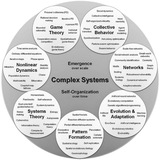group-telegram.com/ComplexSys/5803
Last Update:
How do similarities shape our connections—and what does that mean for spreading ideas, trends, or diseases?
Traditional models assume a simple rule: people connect with others like them. But our research goes further. We’ve created a model that separates local homophily—strong bonds within close-knit groups—from global homophily, the weaker links across broader communities. This distinction helps explain complex social behaviors and how they impact network dynamics.
Using a maximum entropy approach, our model quantifies these layers of homophily and their influence on networks. One key finding is that different levels of homophily lead to unique percolation behaviors—shifts in how networks stay connected or fragment under certain conditions. We also discovered that these interactions affect critical thresholds for spreading phenomena, from viral outbreaks to information diffusion.
By applying our model to diverse real-world datasets, we demonstrated its ability to capture fine-grained patterns in networks. The insights go beyond theory—they have real implications for designing better public health interventions, optimizing information campaigns, and understanding the role of community structures in amplifying or limiting spread.
So, if you are looking for a network model that distinguishes between [local] homophily within small groups and [global] homophily across larger, more diverse communities, you shall not miss our new pre-print: https://arxiv.org/abs/2412.07901
BY Complex Systems Studies
Warning: Undefined variable $i in /var/www/group-telegram/post.php on line 260
Share with your friend now:
group-telegram.com/ComplexSys/5803
